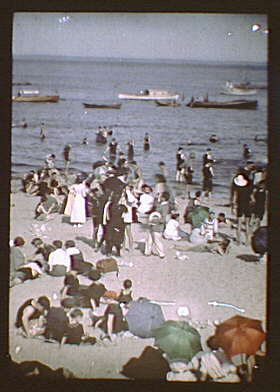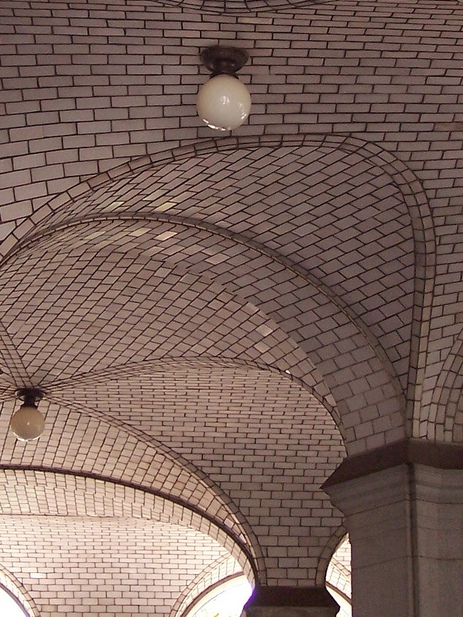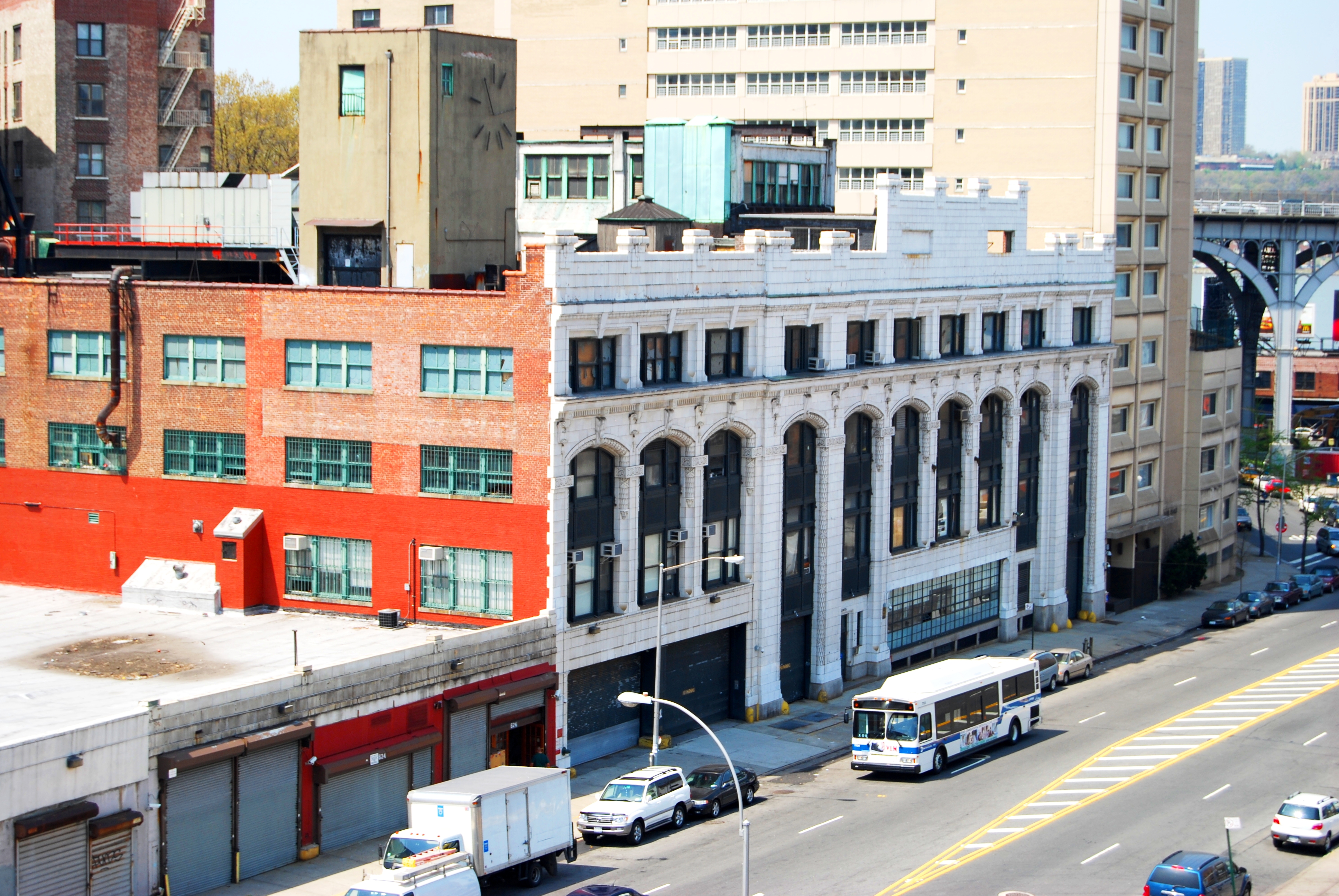|
Frank A. Rooke
Frank Aydelott Rooke, known professionally as Frank A. Rooke, was a New York architect who designed the historic Claremont Riding Academy and numerous other structures of significance that are either in National Historic Districts or listed on the National Register of Historic Places in the tri-state area. Early life Rooke was born in 1862 in Rye, New York. He opened an office at 1262 Broadway in Manhattan in 1887. That year he designed a building combining a store, a stable, and apartments for Loton Horton of the Horton Ice Cream Co., at 371 Amsterdam Avenue, in the Upper West Side–Central Park West Historic District (designated by the New York City Landmarks Preservation Commission). Higgs & Rooke Rooke formed a brief but productive partnership with architect Paul Franklyn Higgs in 1888. Over the next 2 years, they designed several buildings together which today are in recognized national historic districts. in 1889–90, they planned a Flemish/Romanesque Revival style ... [...More Info...] [...Related Items...] OR: [Wikipedia] [Google] [Baidu] |
Rye, New York
Rye is a coastal suburb of New York City in Westchester County, New York, United States. It is separate from the Town of Rye, which has more land area than the city. The City of Rye, formerly the Village of Rye, was part of the Town until it received its charter as a city in 1942, making it the youngest city in the State of New York. Its population density for its 5.85 square miles of land is roughly 2,729.76/sq mi. Rye is notable for its waterfront which covers 60 percent of the city's six square miles and is governed by a waterfront act instituted in 1991. Located in the city are two National Historic Landmarks: the Boston Post Road Historic District was designated a National Historic Landmark by the National Park Service in 1993; its centerpiece is the Jay Estate, the childhood home of John Jay, a Founding Father and the first Chief Justice of the United States. Playland, a historic amusement park designated a National Historic Landmark in 1987 is also located in Rye. P ... [...More Info...] [...Related Items...] OR: [Wikipedia] [Google] [Baidu] |
Brooklyn
Brooklyn () is a borough of New York City, coextensive with Kings County, in the U.S. state of New York. Kings County is the most populous county in the State of New York, and the second-most densely populated county in the United States, behind New York County (Manhattan). Brooklyn is also New York City's most populous borough,2010 Gazetteer for New York State . Retrieved September 18, 2016. with 2,736,074 residents in 2020. Named after the Dutch village of Breukelen, Brooklyn is located on the w ... [...More Info...] [...Related Items...] OR: [Wikipedia] [Google] [Baidu] |
Category:Sheffield Farms Milk Plant (Bronx)
{{Commonscat multi, Sheffield, City of Sheffield Cities in Yorkshire and the Humber Metropolitan boroughs Towns in South Yorkshire Local government districts in South Yorkshire Wikipedia categories named after populated places in England Wikipedia categories named after districts of England ... [...More Info...] [...Related Items...] OR: [Wikipedia] [Google] [Baidu] |
Vault (architecture)
In architecture, a vault (French ''voûte'', from Italian ''volta'') is a self-supporting arched form, usually of stone or brick, serving to cover a space with a ceiling or roof. As in building an arch, a temporary support is needed while rings of voussoirs are constructed and the rings placed in position. Until the topmost voussoir, the keystone, is positioned, the vault is not self-supporting. Where timber is easily obtained, this temporary support is provided by centering consisting of a framed truss with a semicircular or segmental head, which supports the voussoirs until the ring of the whole arch is completed. Vault types Corbelled vaults, also called false vaults, with horizontally joined layers of stone have been documented since prehistoric times; in the 14th century BC from Mycenae. They were built regionally until modern times. The real vault construction with radially joined stones was already known to the Egyptians and Assyrians and was introduced into the buil ... [...More Info...] [...Related Items...] OR: [Wikipedia] [Google] [Baidu] |
Guastavino Tile
The Guastavino tile arch system is a version of Catalan vault introduced to the United States in 1885 by Spanish architect and builder Rafael Guastavino (1842–1908). It was patented in the United States by Guastavino in 1892. Description Guastavino vaulting is a technique for constructing robust, self-supporting arches and architectural vaults using interlocking terracotta tiles and layers of mortar to form a thin skin, with the tiles following the curve of the roof as opposed to horizontally (corbelling), or perpendicular to the curve (as in Roman vaulting). This is known as timbrel vaulting, because of supposed likeness to the skin of a timbrel or tambourine. It is also called Catalan vaulting (though Guastavino did not use this term) and "compression-only thin-tile vaulting". Guastavino tile is found in some of the most prominent Beaux-Arts structures in New York and Massachusetts, as well as in major buildings across the United States. In New York City, these incl ... [...More Info...] [...Related Items...] OR: [Wikipedia] [Google] [Baidu] |
Terracotta
Terracotta, terra cotta, or terra-cotta (; ; ), in its material sense as an earthenware substrate, is a clay-based ceramic glaze, unglazed or glazed ceramic where the pottery firing, fired body is porous. In applied art, craft, construction, and architecture, terracotta is the term normally used for sculpture made in earthenware and also for various practical uses, including bowl (vessel), vessels (notably flower pots), water and waste water pipes, tile, roofing tiles, bricks, and surface embellishment in building construction. The term is also used to refer to the natural Terra cotta (color), brownish orange color of most terracotta. In archaeology and art history, "terracotta" is often used to describe objects such as figurines not made on a potter's wheel. Vessels and other objects that are or might be made on a wheel from the same material are called earthenware pottery; the choice of term depends on the type of object rather than the material or firing technique. Unglazed ... [...More Info...] [...Related Items...] OR: [Wikipedia] [Google] [Baidu] |
Ceramic Glaze
Ceramic glaze is an impervious layer or coating of a vitreous substance which has been fused to a pottery body through firing. Glaze can serve to color, decorate or waterproof an item. Glazing renders earthenware vessels suitable for holding liquids, sealing the inherent porosity of unglazed biscuit earthenware. It also gives a tougher surface. Glaze is also used on stoneware and porcelain. In addition to their functionality, glazes can form a variety of surface finishes, including degrees of glossy or matte finish and color. Glazes may also enhance the underlying design or texture either unmodified or inscribed, carved or painted. Most pottery produced in recent centuries has been glazed, other than pieces in unglazed biscuit porcelain, terracotta, or some other types. Tiles are almost always glazed on the surface face, and modern architectural terracotta is very often glazed. Glazed brick is also common. Domestic sanitary ware is invariably glazed, as are many ceramics u ... [...More Info...] [...Related Items...] OR: [Wikipedia] [Google] [Baidu] |
Computer Music Center
The Computer Music Center (CMC) at Columbia University is the oldest center for electronic and computer music research in the United States. It was founded in the 1950s as the Columbia-Princeton Electronic Music Center. Location The CMC is housed in Prentis Hall, 632 West 125th Street, New York City, across the street from Columbia's 17-acre Manhattanville campus. The facility consists of a large graduate research facility specializing in computer music and multimedia research, as well as a number of composition and recording studios for student use. Projects to come out of the CMC since the 1990s include: * ArtBots * dorkbot * PeRColate * Real-Time Cmix The Computer Music Center offers the Sound Arts MFA Program, currently directed by Miya Masaoka. The program was formerly directed by Douglas Repetto until 2016. The director of the CMC is Brad Garton, and the CMC offers classes taught by George E. Lewis, Seth Cluett, David Soldier, and Ben Holtzman, as well as a large nu ... [...More Info...] [...Related Items...] OR: [Wikipedia] [Google] [Baidu] |
Prentis Hall
Prentis Hall is a historic building located on the Manhattanville campus of Columbia University at 632 West 125th Street. It houses the university's department of music and the Computer Music Center, as well as facilities for the School of the Arts. It is one of three historic buildings that survived in the university's Manhattanville plan, the others being the Studebaker Building and the Nash Building. History Prentis Hall was built from 1909 to 1911 as a pasteurization and bottling plant for the Sheffield Farms–Slawson–Decker Company. Designed by Frank A. Rooke, who designed several other buildings for Sheffield Farms, the building costed $500,000 to construct and could process 75,000 quarts of milk per day. The building is noted for its façade of white glazed terracotta, which is ornately designed in a French style. Its walls are brick with steel frame covered with concrete. The entire building was built to be vermin-proof and fire-proof. Its bottling room had a 27-f ... [...More Info...] [...Related Items...] OR: [Wikipedia] [Google] [Baidu] |
Columbia University
Columbia University (also known as Columbia, and officially as Columbia University in the City of New York) is a private research university in New York City. Established in 1754 as King's College on the grounds of Trinity Church in Manhattan, Columbia is the oldest institution of higher education in New York and the fifth-oldest institution of higher learning in the United States. It is one of nine colonial colleges founded prior to the Declaration of Independence. It is a member of the Ivy League. Columbia is ranked among the top universities in the world. Columbia was established by royal charter under George II of Great Britain. It was renamed Columbia College in 1784 following the American Revolution, and in 1787 was placed under a private board of trustees headed by former students Alexander Hamilton and John Jay. In 1896, the campus was moved to its current location in Morningside Heights and renamed Columbia University. Columbia scientists and scholars have ... [...More Info...] [...Related Items...] OR: [Wikipedia] [Google] [Baidu] |
Sheffield Farms Stable
Sheffield Farms Stable was a historic stable located in Manhattanville, New York, New York. Designed by Frank A. Rooke, it was a six-story, light colored brick building with terracotta ornament. It was originally built in 1903 as a two-story stable building for the Sheffield Farms dairy, then expanded to its present size in 1909. It housed horses used for the delivery of pasteurized milk until July 1938. It was sold in 1942, after which it housed a real estate company, insurance company, and warehouse. anaccompanying 16 photographs/ref> It was listed on the National Register of Historic Places in 2005. The site is now part of Columbia University Columbia University (also known as Columbia, and officially as Columbia University in the City of New York) is a private research university in New York City. Established in 1754 as King's College on the grounds of Trinity Church in Manhatt ...'s new Manhattanville Campus. In 2009, Columbia contracted with the building's owne ... [...More Info...] [...Related Items...] OR: [Wikipedia] [Google] [Baidu] |
Sheffield Farms Milk Plant (Bronx), Detail Of Terracotta
Sheffield is a city in South Yorkshire, England, whose name derives from the River Sheaf which runs through it. The city serves as the administrative centre of the City of Sheffield. It is historically part of the West Riding of Yorkshire and some of its southern suburbs were transferred from Derbyshire to the city council. It is the largest settlement in South Yorkshire. The city is in the eastern foothills of the Pennines and the valleys of the River Don with its four tributaries: the Loxley, the Porter Brook, the Rivelin and the Sheaf. Sixty-one per cent of Sheffield's entire area is green space and a third of the city lies within the Peak District national park. There are more than 250 parks, woodlands and gardens in the city, which is estimated to contain around 4.5 million trees. The city is south of Leeds, east of Manchester, and north of Nottingham. Sheffield played a crucial role in the Industrial Revolution, with many significant inventions and technolo ... [...More Info...] [...Related Items...] OR: [Wikipedia] [Google] [Baidu] |




.jpg)


